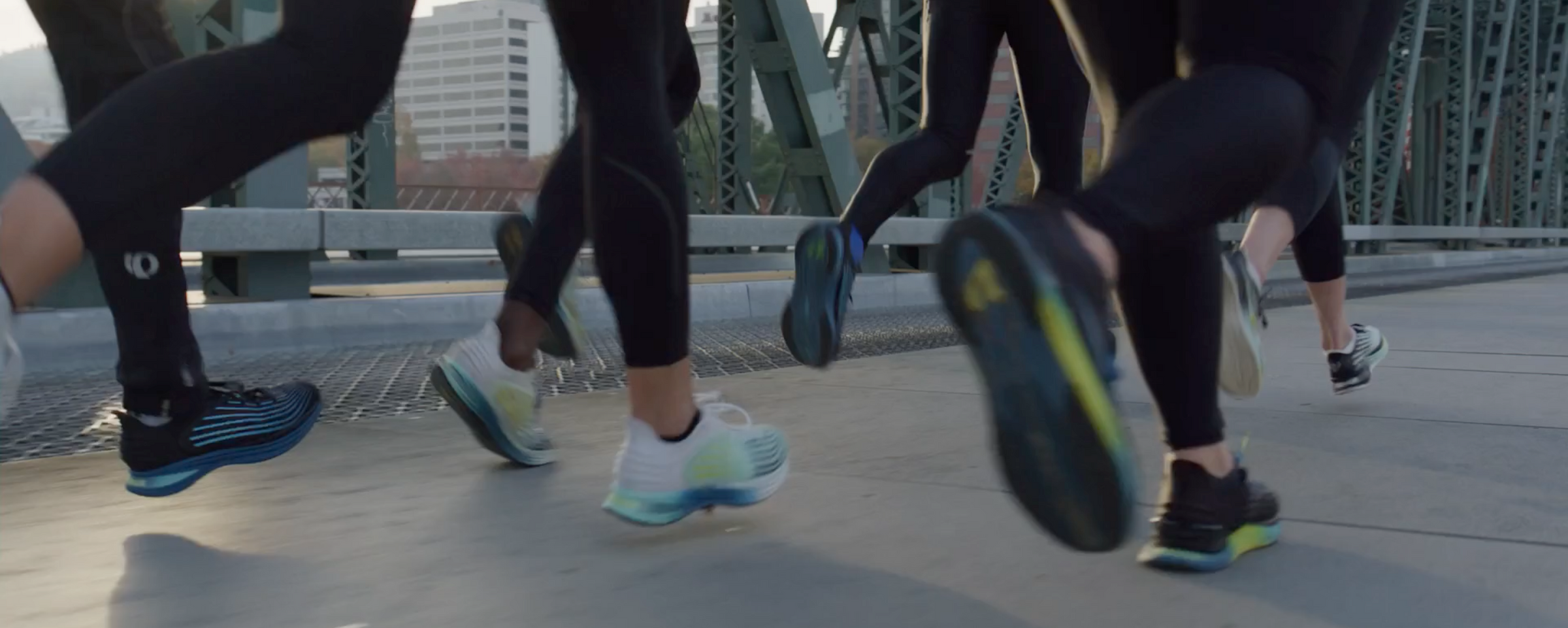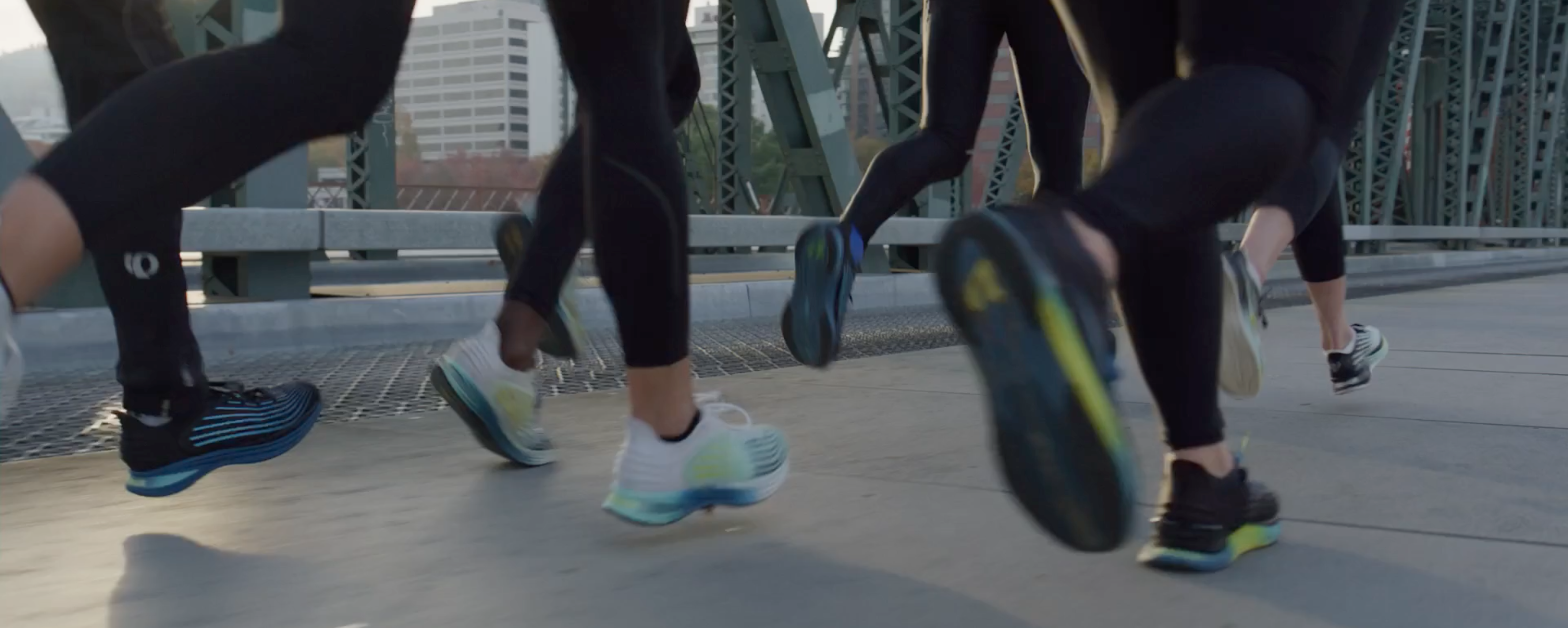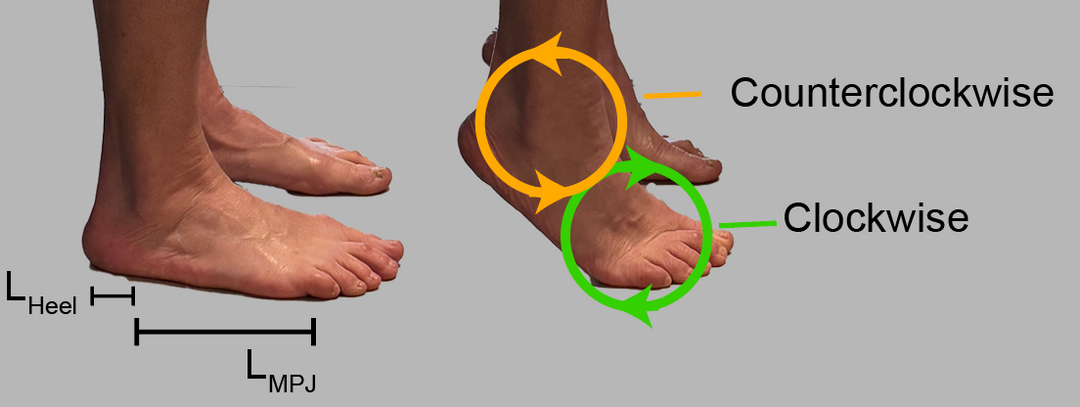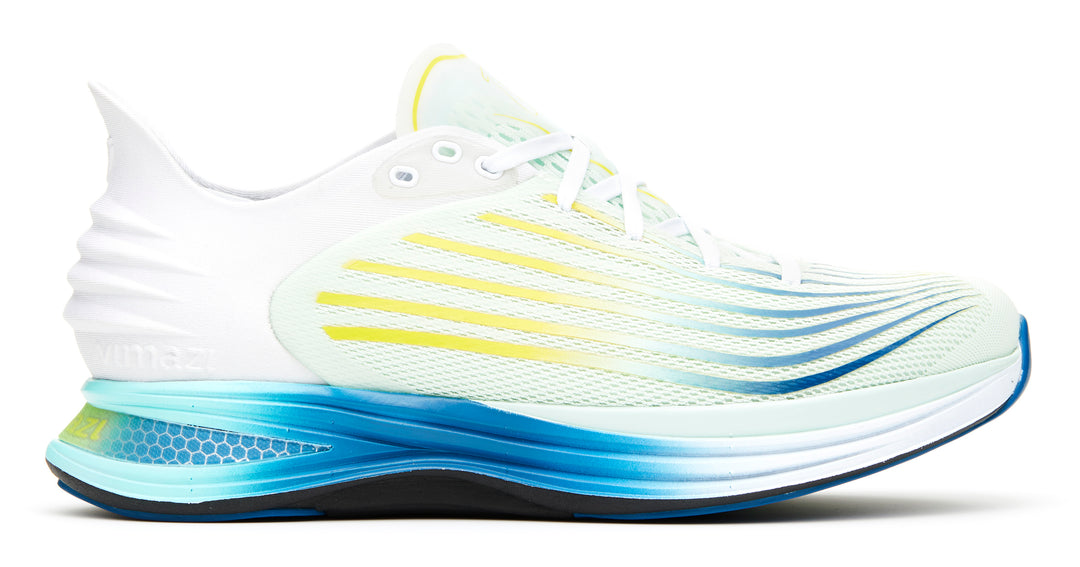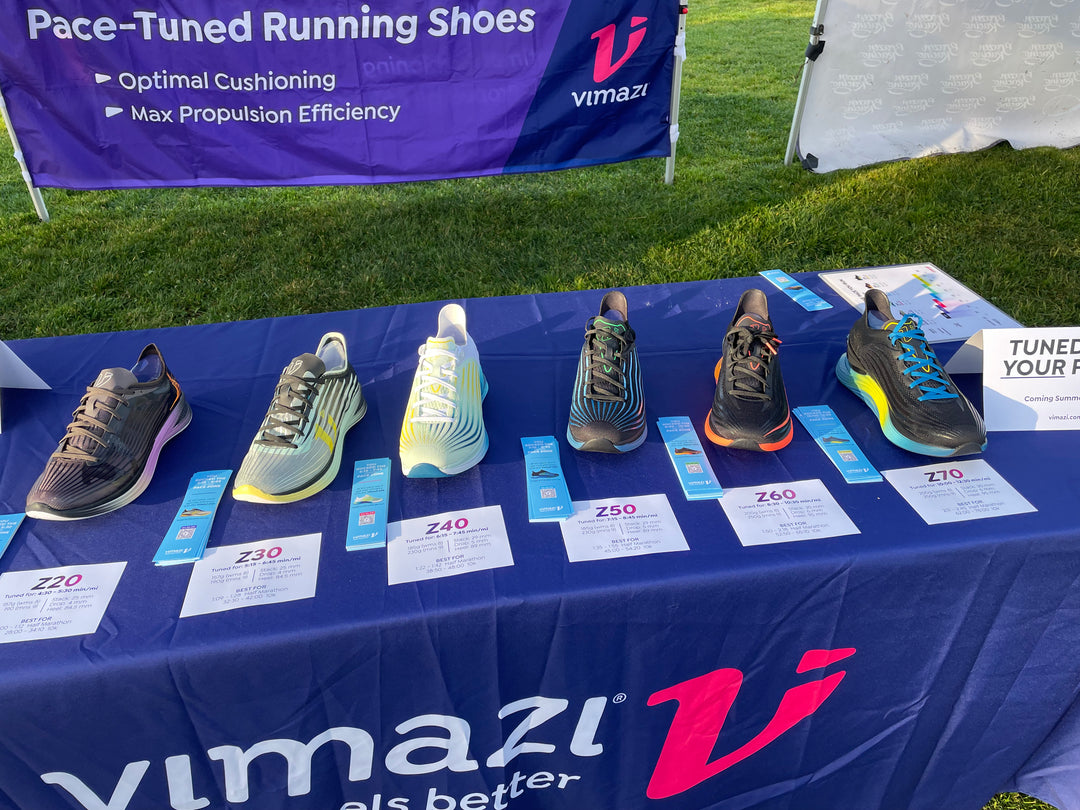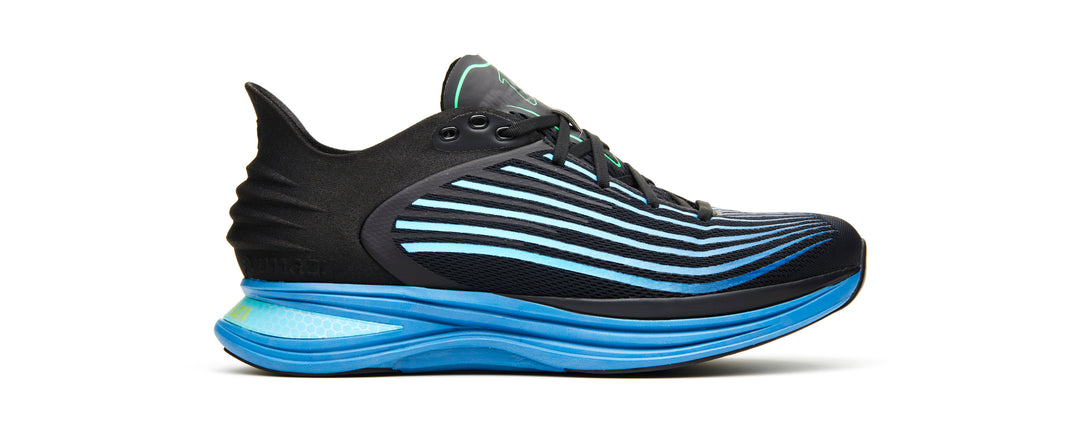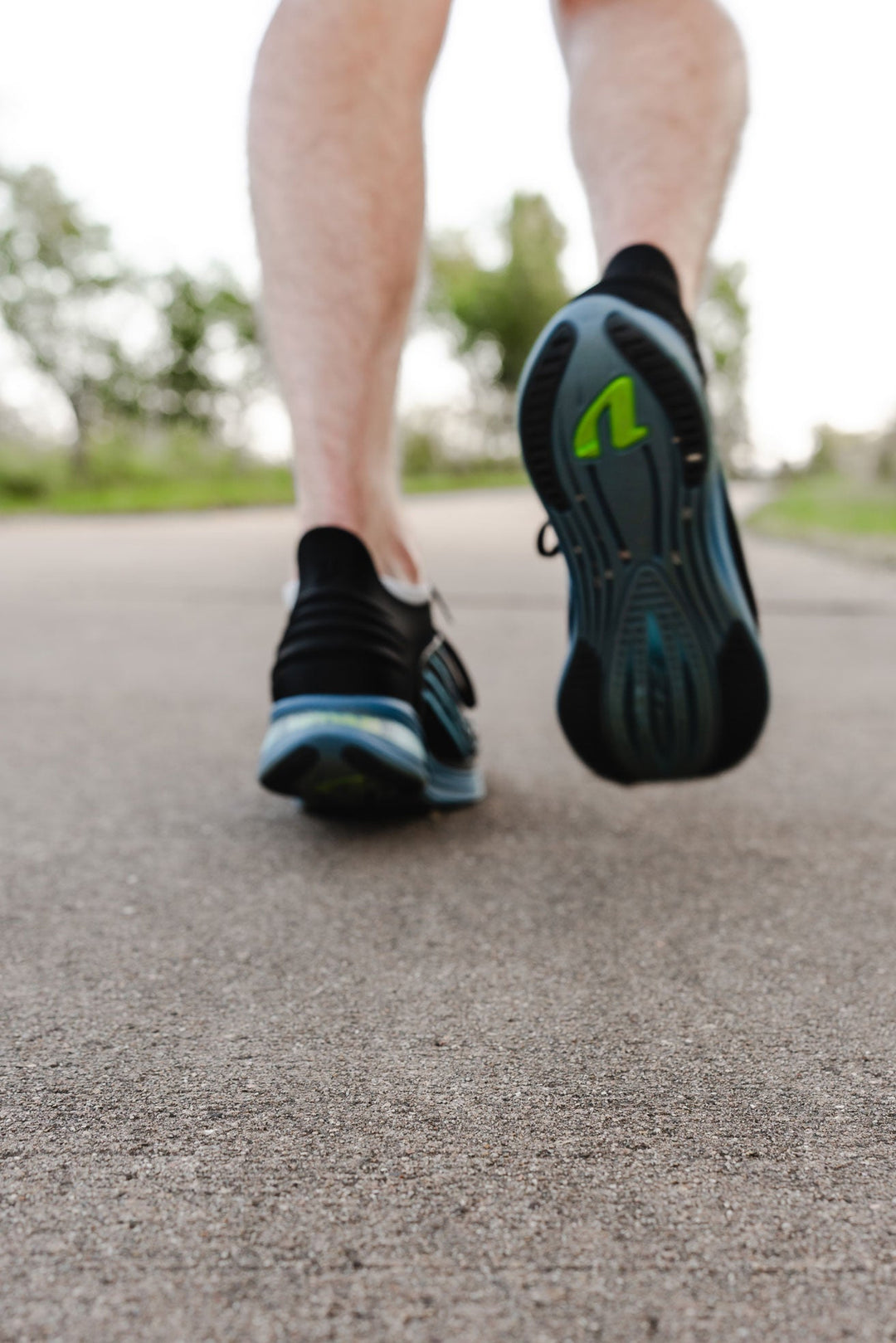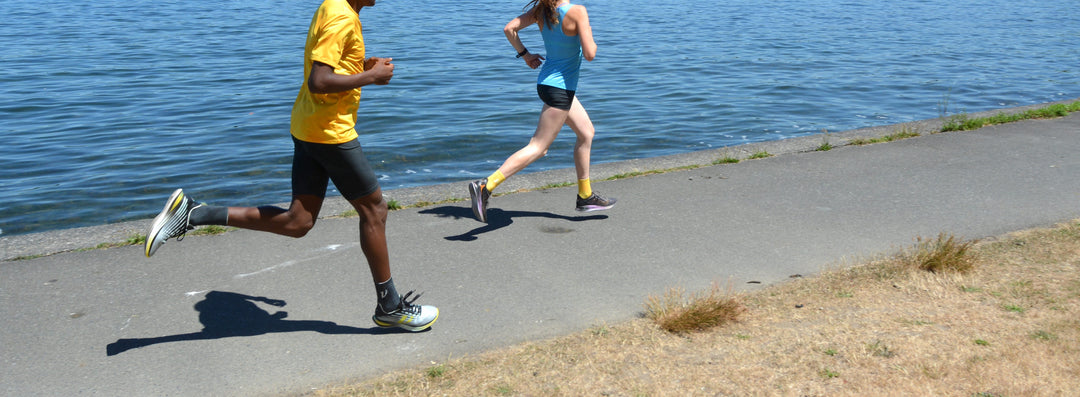It feels good to run without aches and pains
You may have heard about the latest fad in running shoes: energy return. Every brand is claiming that their carbon plates and super-critical foams do more to return energy so that you can run faster with less effort. They want you to believe that energy return is what you want from a shoe. Unfortunately, there is a big problem with that wishful thinking: it's physically impossible, because we are made of joints and are not rigid. You can find more info on this on the website, but the upshot is this: there is a negative, and very real, side effect in attempting to get energy return: increased stress on those vital joints. Over many steps, an increase in stress on your joints can cause damage to the connective tissues and increase your risk of injury. That's bad.
The good news is that we figured out how to build a shoe that doesn't increase injury risk the way other shoes do. Vimazi is all about helping you to have the best running experience so that you have the best chance at continuing to enjoy running as long as possible.

SCOTT TUCKER | Founder
Scott, who's run all six world marathon majors, pioneered trail running shoes while president of Montrail. He also created numerous running shoes for Scott Sports and Pearl Izumi.
Follow Scott on LinkedIn
We'd love to hear from you
Hit us up with a question, and we'll get back to you asap. Become a Vimazi Friend by subscribing to our weekly newsletter.




